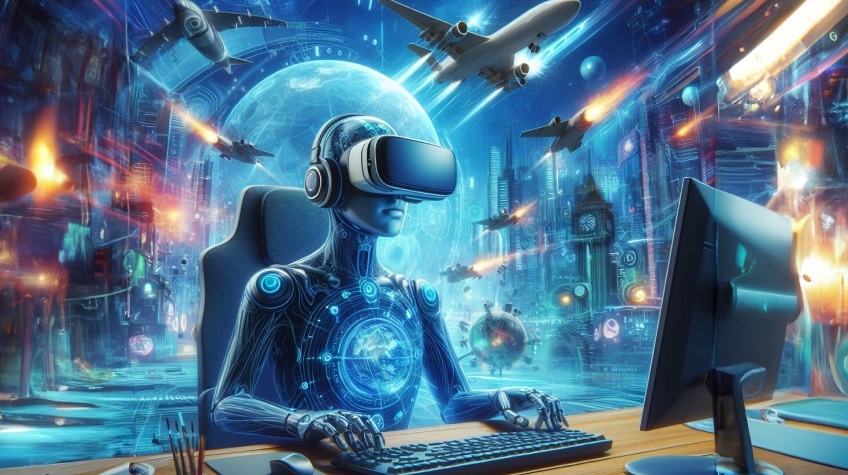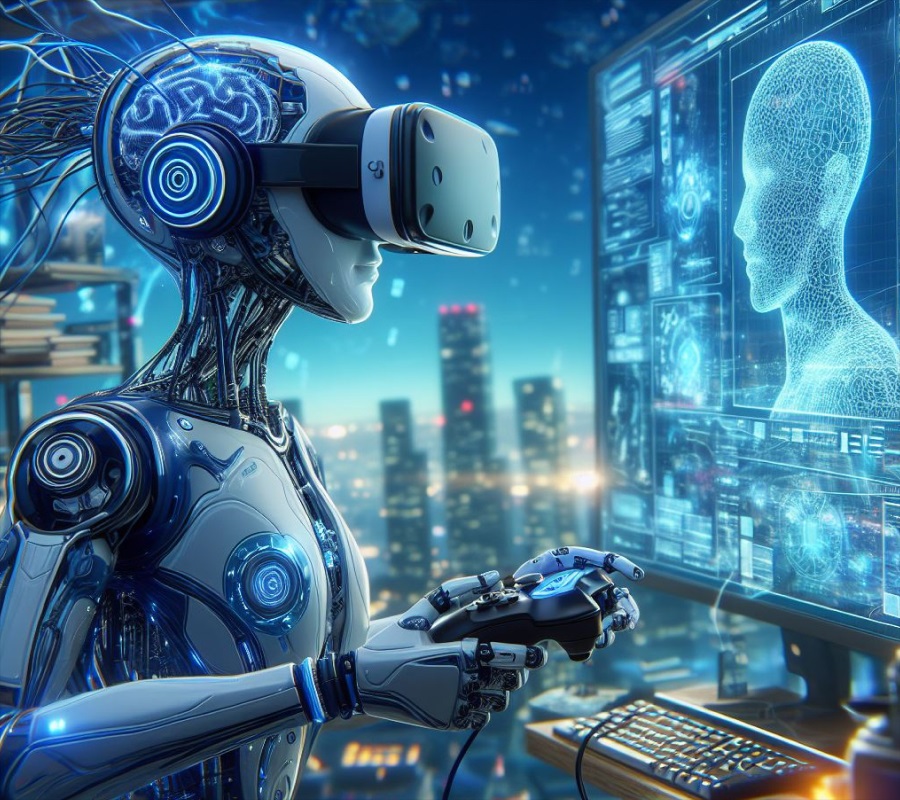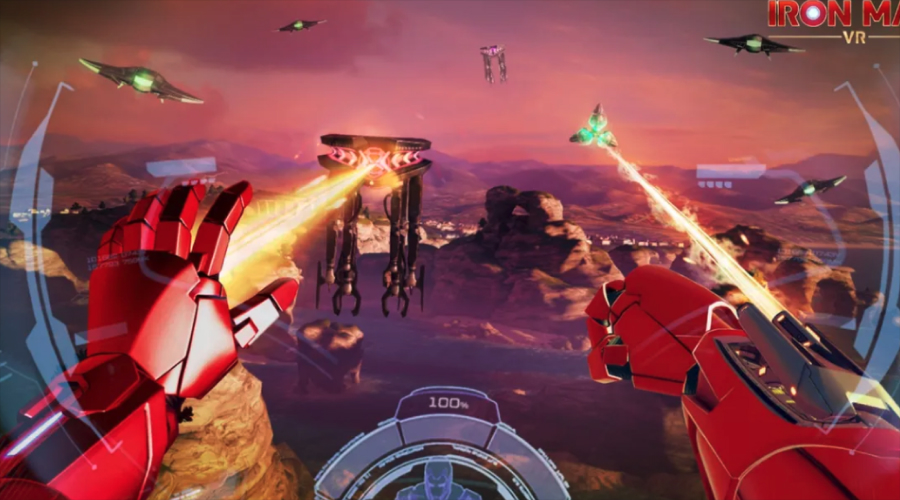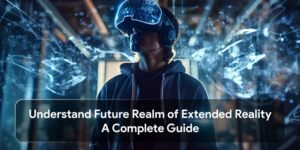
Virtual Reality (VR) has emerged as a transformative technology, transporting users to immersive and interactive digital worlds. When combined with Artificial Intelligence (AI), VR experiences reach new heights, offering unprecedented levels of realism, interactivity, and immersion. In this blog, we will explore how AI and VR technologies converge to create awe-inspiring virtual reality experiences in 3D games. From AI-driven character interactions to intelligent world generation, we will delve into the exciting possibilities and advancements at the intersection of AI and VR.
1. The Synergy of AI and VR
Understanding AI
Artificial Intelligence (AI) forms the backbone of intelligent Virtual Reality (VR) experiences. AI encompasses a range of techniques and algorithms that enable machines to mimic human intelligence and behavior.
In the context of VR, AI algorithms are employed to enhance the realism, interactivity, and immersion of virtual worlds. Machine learning, natural language processing, computer vision, and other AI subfields contribute to creating intelligent VR environments.
Unleashing the Potential of VR
Virtual Reality is one of the technology trends that simulates a realistic, computer-generated environment, allowing users to immerse themselves and interact with the digital world. VR has the power to transport users to new realms, whether it’s exploring fantastical landscapes, experiencing historical events, or participating in thrilling adventures. The immersive nature of VR captivates users, making them feel present in the virtual environment and enabling them to engage with objects and characters in novel ways.
The Power of AI-Enabled VR
When AI and VR converge, they unlock tremendous potential for creating truly immersive and interactive experiences. AI techniques enhance VR by infusing virtual worlds with intelligence, enabling realistic and dynamic interactions.
AI algorithms can analyze user inputs, adapt to the environment, and respond intelligently to user actions, heightening the level of engagement.
This synergy between AI and VR amplifies the realism, making virtual experiences feel more authentic and captivating.
2. AI-Driven Character Interactions

Natural Language Processing in VR
Natural Language Processing (NLP) is a subset of AI that focuses on enabling machines to understand and generate human language. In VR, NLP plays a crucial role in creating conversational Non-Player Characters (NPCs). These NPCs can understand and respond to user queries and commands, enabling meaningful and dynamic interactions within the virtual world.
Users can engage in realistic conversations, ask questions, and receive contextually relevant responses, enhancing the immersion and realism of the VR experience.
Emotion Recognition
Emotion recognition technologies empower AI characters in VR to perceive and respond to human emotions. By analyzing facial expressions, vocal cues, and physiological signals, AI algorithms can infer the emotional state of users. This capability enables AI characters to exhibit empathy, understanding, and appropriate emotional responses.
Empathetic AI characters can enhance the emotional connection between users and the virtual world, making the experience more relatable and compelling.
AI-Powered Behavioral Systems
AI-powered behavioral systems bring NPCs to life in VR games. These systems leverage machine learning and decision-making algorithms to imbue NPCs with realistic and dynamic behaviors. NPCs can exhibit complex and believable actions, such as exploring the environment, reacting to stimuli, and interacting with other characters.
The AI algorithms enable NPCs to adapt their behaviors based on user interactions, creating a sense of realism and unpredictability. This dynamic nature of AI-driven NPCs adds depth and immersion to the VR experience.
3. Intelligent World Generation
Procedural Content Generation
Procedural Content Generation (PCG) is a technique that utilizes AI algorithms to generate vast amounts of diverse and dynamic content in virtual worlds. In VR games, PCG can create expansive landscapes, intricate dungeons, and unique levels, providing players with endless possibilities for exploration and discovery. By leveraging AI, developers can design algorithms that generate content based on predefined rules or learned patterns, resulting in immersive and ever-changing game environments that keep players engaged and excited.
If you’re looking for professional assistance with 3D game art outsourcing, you can explore reputable outsourcing companies such as Pixune Studios. These companies specialize in providing high-quality 3D game art assets, including character models, environments, textures, and animations. Outsourcing 3D game art can save development time and resources while ensuring visually stunning and polished game experiences.
AI-Generated Landscapes and Environments
AI-powered algorithms can generate virtual landscapes and environments with unprecedented levels of realism. By analyzing real-world data, such as satellite images or geological information, AI can recreate natural environments, from lush forests to towering mountains, with remarkable accuracy. Additionally, AI can simulate the behavior of natural phenomena like weather patterns, water flow, and vegetation growth, further enhancing the authenticity of the virtual world.
The combination of AI and VR enables players to explore incredibly detailed and lifelike environments, blurring the lines between the virtual and the real.
Dynamic World Adaptation

AI-driven dynamic world adaptation allows virtual environments to respond intelligently to user actions and preferences. By monitoring player behavior and interactions, AI algorithms can adapt to the virtual world in real-time, tailoring the experience to individual players or groups. This adaptation can include adjusting difficulty levels, generating new challenges, or even transforming the environment based on user preferences.
Dynamic world adaptation ensures that the VR experience remains engaging and personalized, providing players with a sense of agency and control over their virtual adventures.
4. AI-Assisted Gameplay Adaptation
Personalized Challenges
AI can act as a virtual game designer, creating personalized challenges tailored to individual players’ skills and preferences. By analyzing player behavior, AI algorithms can generate levels, puzzles, and missions that dynamically adapt to the player’s abilities. This personalized approach ensures that players are consistently presented with challenges that are neither too easy nor too difficult, optimizing their engagement and enjoyment.
AI-assisted gameplay adaptation enhances the replayability and longevity of VR games, offering unique experiences tailored to each player’s capabilities.
Adaptive Difficulty
The adaptive difficulty is a feature where AI algorithms adjust the game’s difficulty level based on player performance in real time. By monitoring player actions, AI can dynamically modify enemy behavior, alter puzzle complexity, or adjust the speed and strength of opponents to maintain an optimal level of challenge.
This ensures that players are consistently challenged and prevents frustration or boredom that can arise from static difficulty settings. Adaptive difficulty algorithms create a seamless and immersive gameplay experience, catering to players of varying skill levels.
Check this: How to Fix Meta Quest 2 and 3 Casting not Working
Smart AI Companions
AI-powered companions in VR games can serve as intelligent teammates or opponents, enhancing cooperative gameplay experiences. These AI companions can exhibit sophisticated behaviors, adaptive strategies, and responsive interactions, making them valuable allies or formidable adversaries.
AI companions can understand and respond to player commands, provide assistance, offer tactical suggestions, or engage in realistic dialogues, fostering a sense of teamwork and immersion. Smart AI companions add depth and excitement to cooperative VR gameplay, creating memorable and dynamic multiplayer experiences.
5. AI-Enhanced Visuals and Immersion
Realistic Physics Simulations
AI algorithms can simulate realistic physics in VR games, enabling objects and characters to interact with the virtual environment in a lifelike manner. By incorporating physics engines driven by AI, VR experiences can achieve accurate collision detection, realistic object dynamics, and natural movement.
This level of realism enhances immersion and enables players to interact with the virtual world in a more intuitive and tactile way, heightening the overall sense of presence and engagement.
AI-Driven Animation and Motion Capture
AI plays a crucial role in creating lifelike avatars and character animations in VR games. Through techniques such as motion capture and machine learning, AI algorithms can analyze and replicate human movement with remarkable fidelity. This results in avatars that move and behave realistically, mimicking the nuances of human motion.
AI-driven animation and motion capture add a layer of authenticity to VR experiences, allowing players to embody virtual characters and experience a heightened sense of immersion.
Audio Synthesis and Spatial Sound
AI algorithms can enhance audio experiences in VR games through techniques like audio synthesis and spatial sound. By analyzing the virtual environment and user interactions, AI can dynamically generate realistic soundscapes that respond to the player’s actions and position in the virtual world.
Spatial sound algorithms simulate the direction and distance of audio sources, creating a three-dimensional audio environment that enhances immersion and situational awareness. AI-powered audio synthesis and spatial sound technologies contribute to the overall sense of presence in VR, making the virtual world feel more realistic and captivating to the players.
6. AI for VR Performance Optimization
Intelligent Rendering Techniques
Rendering realistic graphics in VR is computationally intensive and requires significant processing power. AI can assist in optimizing graphics quality by employing intelligent rendering techniques. AI algorithms can analyze the scene complexity, user preferences, and available hardware resources to dynamically adjust rendering settings in real time.
This ensures that VR experiences maintain a balance between visual fidelity and performance, delivering optimal graphics quality without compromising the overall framerate or causing discomfort to users.
AI-driven intelligent rendering techniques adaptively allocate computational resources, allowing developers to push the boundaries of visual realism in VR.
AI-Based Resource Management
VR experiences often require efficient resource management to ensure smooth performance and minimize latency. AI can play a crucial role in optimizing resource allocation for VR applications. By monitoring system performance, AI algorithms can dynamically distribute computational resources, such as CPU and GPU utilization, memory allocation, and network bandwidth, based on real-time demands.
This intelligent resource management enhances the overall efficiency of VR experiences, reducing latency, improving responsiveness, and ensuring a seamless and immersive user experience.
Predictive Analytics

Predictive analytics powered by AI can anticipate user actions and optimize VR experiences accordingly. By analyzing historical data or real-time user interactions, AI algorithms can predict the next likely user actions and pre-load assets, environments, or game states in advance.
This predictive capability minimizes loading times and latency, ensuring smooth transitions and uninterrupted gameplay. Predictive analytics in VR enable a seamless and immersive experience, as the virtual environment seamlessly adapts to the user’s actions, providing a sense of responsiveness and fluidity.
7. The Future of AI-Enabled VR Experiences
Advancements in AI and VR
The future of VR experiences is filled with immense potential. As AI and VR technologies continue to advance, we can expect even more immersive, intelligent, and personalized virtual experiences.
AI algorithms will become more sophisticated, enabling enhanced character interactions, intelligent world generation, and seamless performance optimization. The synergy between AI and VR will drive innovation, providing users with unprecedented levels of realism, interactivity, and engagement.
Ethical Considerations
As AI and VR evolve, ethical considerations become increasingly important. The pursuit of realism in VR experiences must be balanced with user safety and well-being. AI algorithms should be designed to prioritize user comfort, mitigate motion sickness, and ensure that virtual content adheres to ethical guidelines. It is essential to address privacy concerns, data security, and potential psychological impacts to create a responsible and inclusive AI-enabled VR ecosystem.
Industry Applications
While gaming has been a primary focus of AI-enabled VR experiences, the applications of this technology extend beyond the gaming industry. AI and VR can revolutionize various sectors, such as education, training, healthcare, architecture, and more.
Virtual simulations powered by AI can provide realistic training environments, enable remote collaboration, and facilitate immersive learning experiences. The combination of AI and VR has the potential to reshape how we work, learn, and interact in a wide range of industries, opening up new possibilities for innovation and advancement.
Conclusion
The combination of AI and VR has unlocked new realms of possibilities in creating immersive and interactive virtual reality experiences in 3D games. From AI-driven character interactions and intelligent world generation to adaptive gameplay and enhanced visuals, the synergy between these technologies has revolutionized the gaming industry.
As advancements continue and ethical considerations are addressed, AI-enabled VR experiences will continue to push the boundaries of what is possible, captivating players and transporting them to extraordinary digital worlds.






